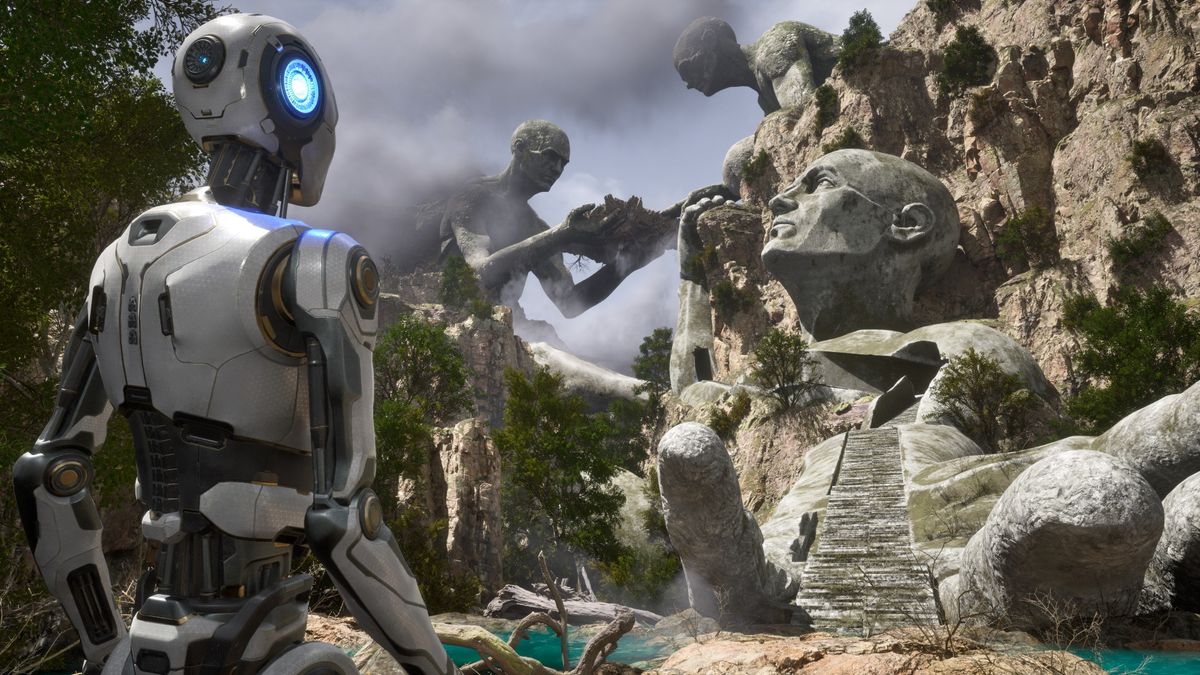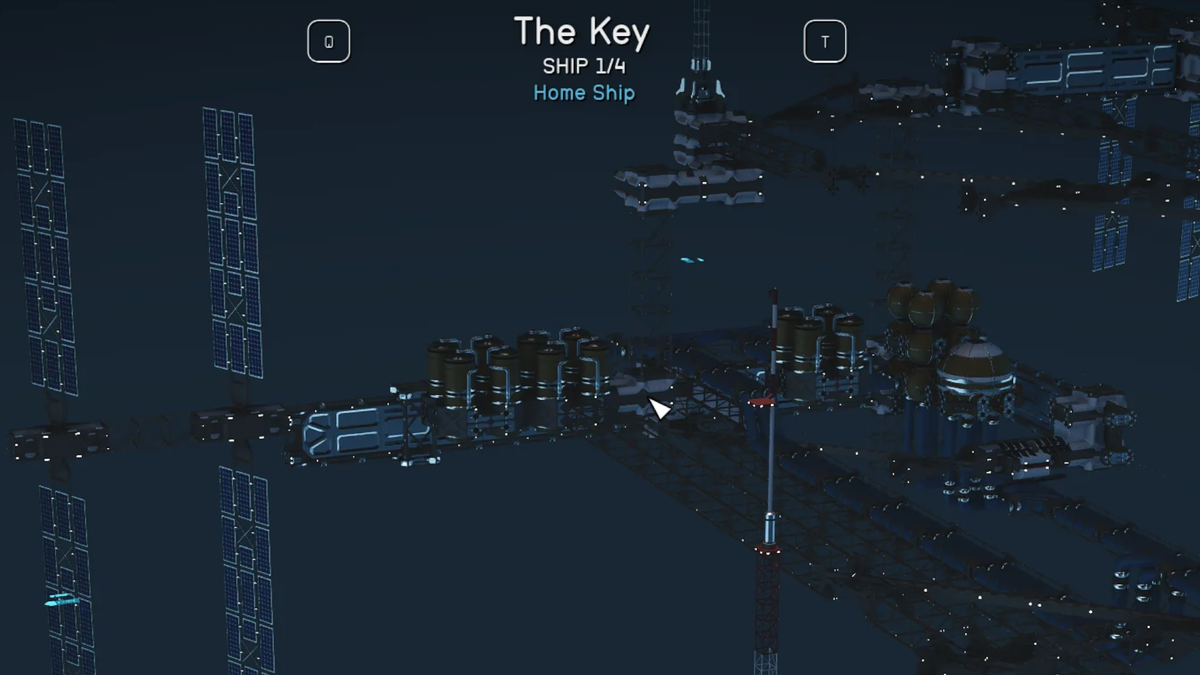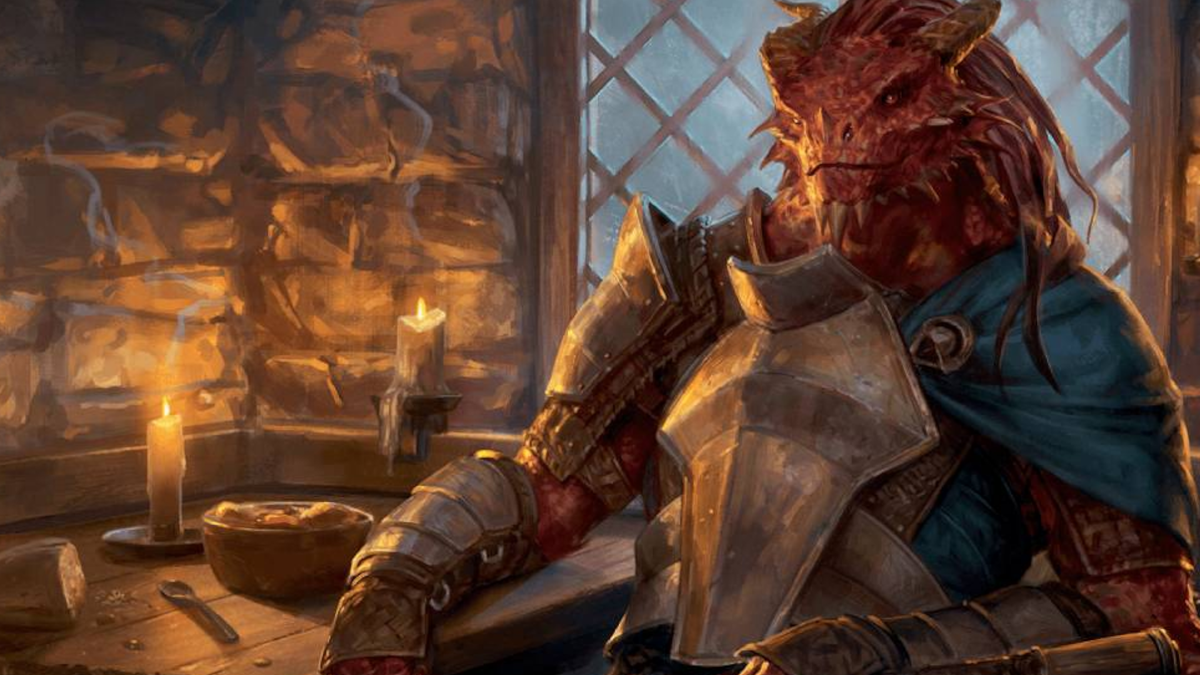One of the best of the many first-person puzzlers that followed in Portal’s wake, The Talos Principle offered what felt like a complete experience. The possibility space of its puzzles—tools that you’d move around to overcome environmental obstacles—was thoroughly explored. And its story—a kind of meditation on the nature of individualism and free will, in part explored through text prompt conversations with a nihilistic contrarian—was complete. Where’s even left to go?
In The Talos Principle 2, the answer is far into the future. At the end of the first game, the main character’s puzzling prison is revealed to be an AI simulation designed to train a new form of human—a robotic lifeform to replace the previous, meat-based version that had been made extinct by environmental catastrophe. Now, many years later, we see what they’ve built.
My hands-off demo starts with a short boot-up sequence that mimics the style, architecture and puzzles of the original game. It’s after this that The Talos Principle 2 reveals the ace up its sleeve. You are born into the world—the 1,000th citizen of the city of New Jerusalem, and, according to the rules of their society, also the last. In an effort to avoid the mistakes of the past, the robots strive for ecological austerity. 1,000 people. That’s it. That’s their lot.
For some, your character’s birth is a cause of celebration—the end of their expansion and the beginning of the final form of their society. For others, it’s a bitter pill. The city is struggling for the resources they need to build and repair, causing some to argue for continued growth and further exploitation of the land. These are the stakes for The Talos Principle 2. If the first game was about what it means to be an individual, the sequel asks what that means for the society that individuals form.
It is, of course, still about puzzles too. As the robots gather to celebrate the arrival of the last member of their tribe, they’re interrupted by a stream of swirling purple particles that coalesce into a godlike figure that calls himself Prometheus. He invites everyone to his island, before being interrupted by an unseen figure called Pandora.
You can explore the city before you leave, learning about the ideological differences that are forming, and about the mythology created around the original game’s events—a mythology that may not be entirely true to how it actually played out. Eventually, though, you set off with a team to visit Prometheus’s island, and discover the giant pyramid at its centre.
What’s inside the pyramid is one of the game’s big mysteries, one that requires exploring the island and the puzzles it contains. As in the first game, these puzzles are artificially constructed—’man’-made obstacles that you are being challenged to overcome. That this is a seemingly deliberate parallel to the origin of their society—the AI training program their founder completed—is a fact not lost on the exploration team.
As for the puzzles themselves, the developers showed off a handful of new ways to interact with the world. Once again, the general shape of the puzzles is using the tools of each space to overcome the obstacle standing between you and your goal. They’re similar in style to the objects of the first game, but with a twist of extra complexity. Instead of a connector to redirect lasers around an environment, for instance, here I see an RGB converter that changes the colour of said lasers.
In one puzzle, we need to hook up a red laser to the matching receiver in order to deactivate an energy wall. Only, the laser is nowhere near where it needs to be. To solve it, we hook the red laser up to a nearby blue laser to create a green one, and shoot that off towards a nearby blue laser, where, using a second RGB converter, we can output another red beam and redirect it to where it needs to go.
Each completed puzzle releases a particle cloud that is collected up in a hub area to construct a bridge to a new part of the island. The implication of this technology is clear to the explorers: if it can be used to fabricate new objects, it’s potentially a valuable tool for their resource depleted home.
Other tools include a driller that forms holes in walls, a teleportation pad that you can warp to, and an activator that projects a spherical aura that turns on any device within it. Puzzles may also contain empty robot shells that you’re able to mind transfer into, essentially co-operating with yourself to find a solution. It’s a fun looking suite of new options that should offer plenty of challenge as the various tools are combined together in increasingly complex ways.
So sure, The Talos Principle didn’t need a sequel, but I can’t fault the ambition on display here. It’s a smart progression: moving from a self-reflective mystery to one that has implications for a larger society, where you’re working with an actual team in pursuit of a common goal. And even the short demo did enough to have me intrigued about its central mystery—the giant megastructure that I already want to see inside. I can’t say for sure if the puzzle tools will do enough to make the moment-to-moment puzzling feel meaningfully different, but I’m certainly looking forward to figuring out the answers.


